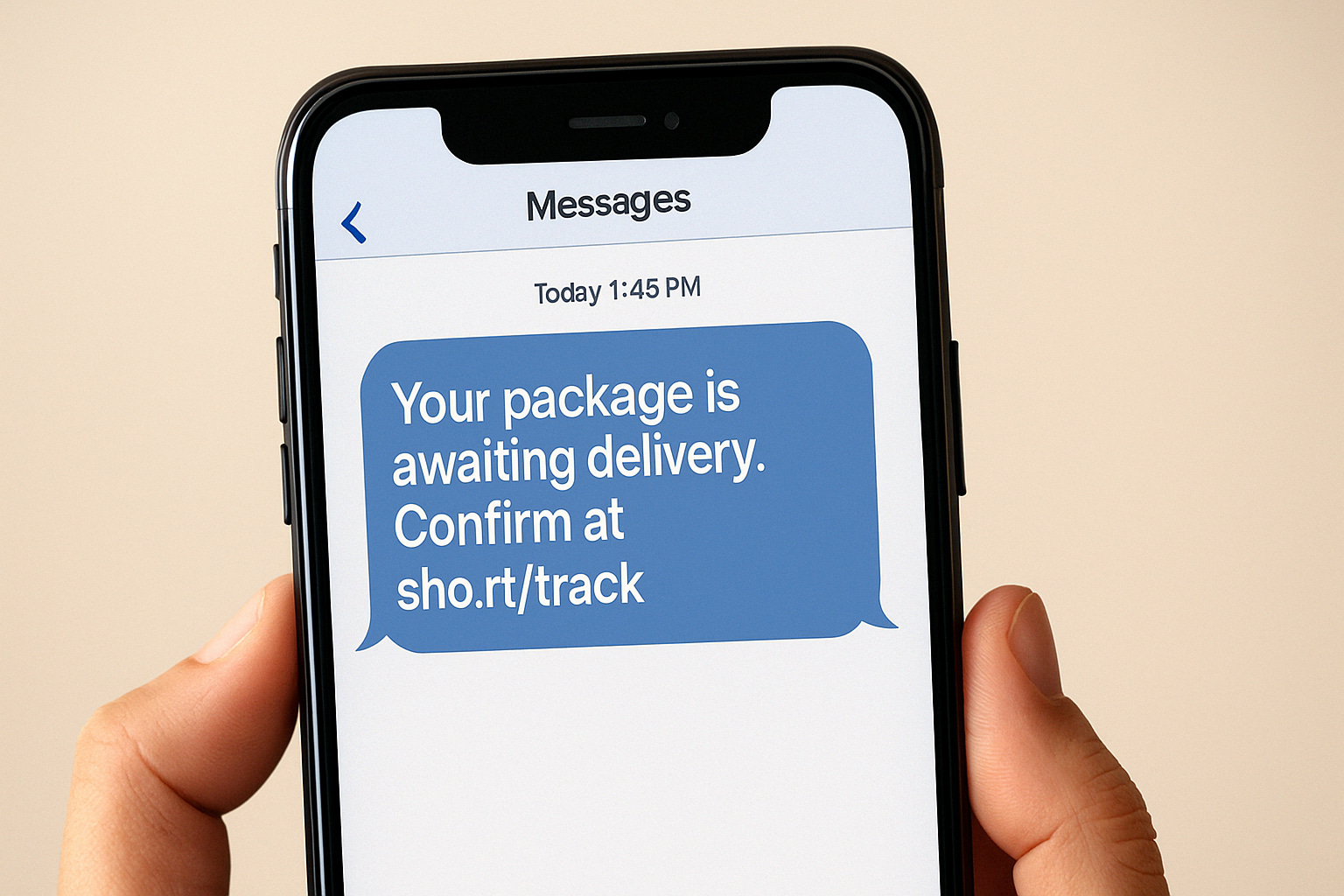Think you missed a parcel and got a “Royal Mail” text asking for a small fee? Here’s how these fake payment pages work — and how our free UK helpline can help you shut them down fast.
Recently received an unknown text or email? Don’t risk it. Call now to get a FREE security check.
Call Now Call 020 3773 1588

“Your parcel needs a redelivery fee of £1.45.” The message arrives just when you’re waiting for something. The link looks official. But the payment page isn’t Royal Mail — it’s a clone built to steal your card details and personal info.
How the “Royal Mail” parcel smish works

- The bait: A text claims a fee or address update is needed. The link uses delivery-style words but a strange domain.
- The fake page: It asks for name, address, date of birth, and full card details. The branding looks real, but the web address isn’t.
- The drain: Small test charges appear, then larger unknown payments — or calls from crooks posing as “the bank’s fraud team”.
- The follow-up: Your details are reused for new scams. Expect more texts/calls within days.
Don’t click on a spam message. You could get hacked. Check you device for FREE now
An advisor can secure your accounts, check your device, and stop further losses.
Call Now Call 020 3773 1588Red flags that mean “don’t pay”
- Odd web address. Genuine couriers use their official domain — not a look-alike or link shortener.
- Pressure language. “Pay in 10 minutes” or threats of return-to-sender are scare tactics.
- Unnecessary data. A courier doesn’t need your full card number, date of birth, or online banking codes.
- Typos and mismatched styles. Small errors and US-style dates are common tells.
- Weird payment flow. Extra “verification” pages that re-ask for card details = danger.
If you clicked — do this now
- Call our free UK helpline for step-by-step help securing your accounts.
- Contact your bank’s official number (on the back of your card). Ask for a fraud block and a new card if you entered details.
- Change passwords on email and shopping sites if you reused them. Turn on 2-step verification.
- Report the text by forwarding to 7726 (free). It helps block future waves.
- Delete the message and block the sender.
- Keep evidence (screenshots, dates, amounts) in case your bank asks.

Doubts about emails or messages you’ve received recently? Don’t guess. Get FREE Advice Now
Speak to a UK cyber advisor for free. We’ll confirm what’s real, remove threats, and secure your accounts.
Tap for Free Cybersecurity Advice Call 020 3773 1588Remember: Genuine delivery services won’t ask for full card numbers or online banking codes by text. When in doubt, don’t click — call for help.


